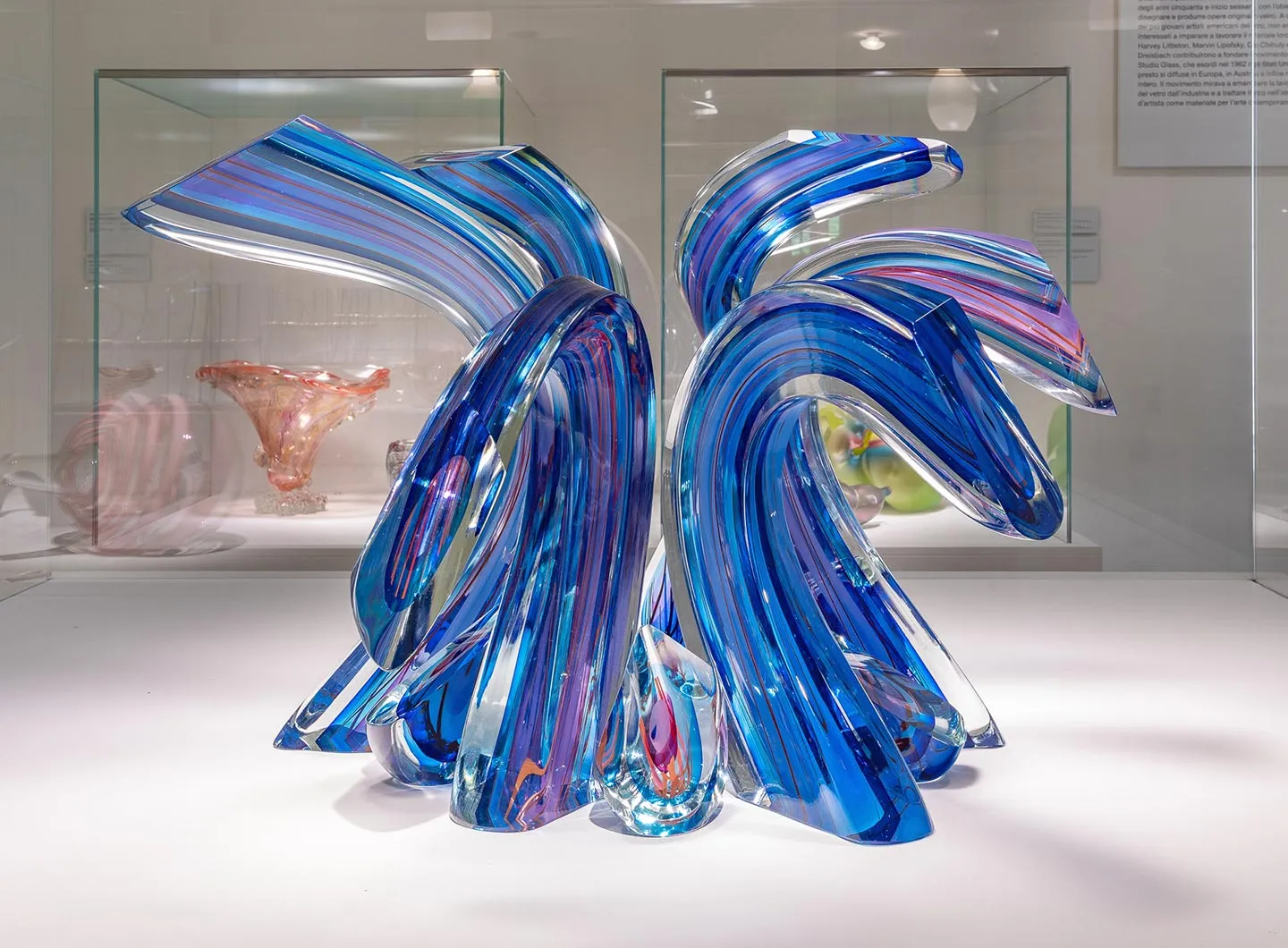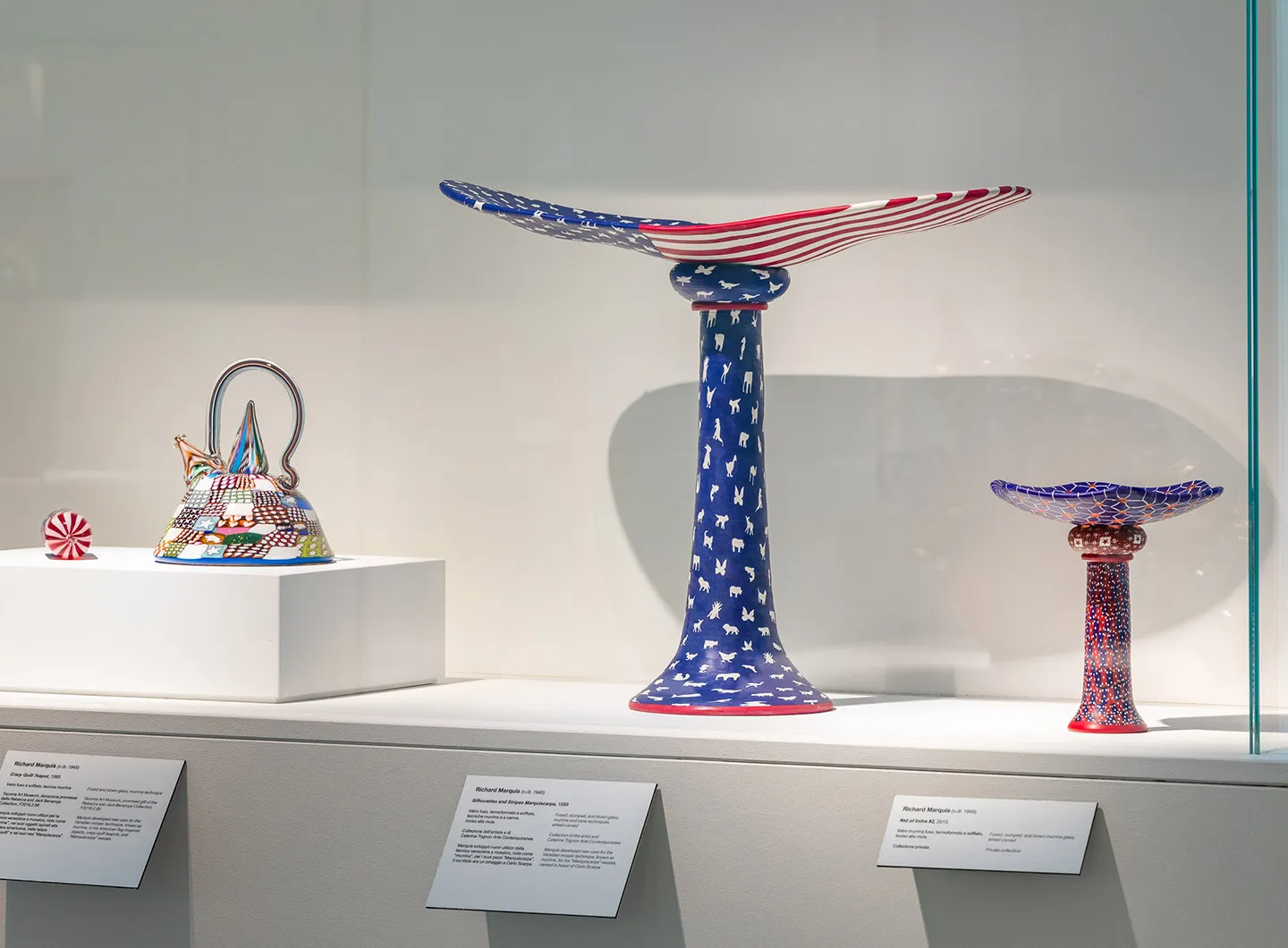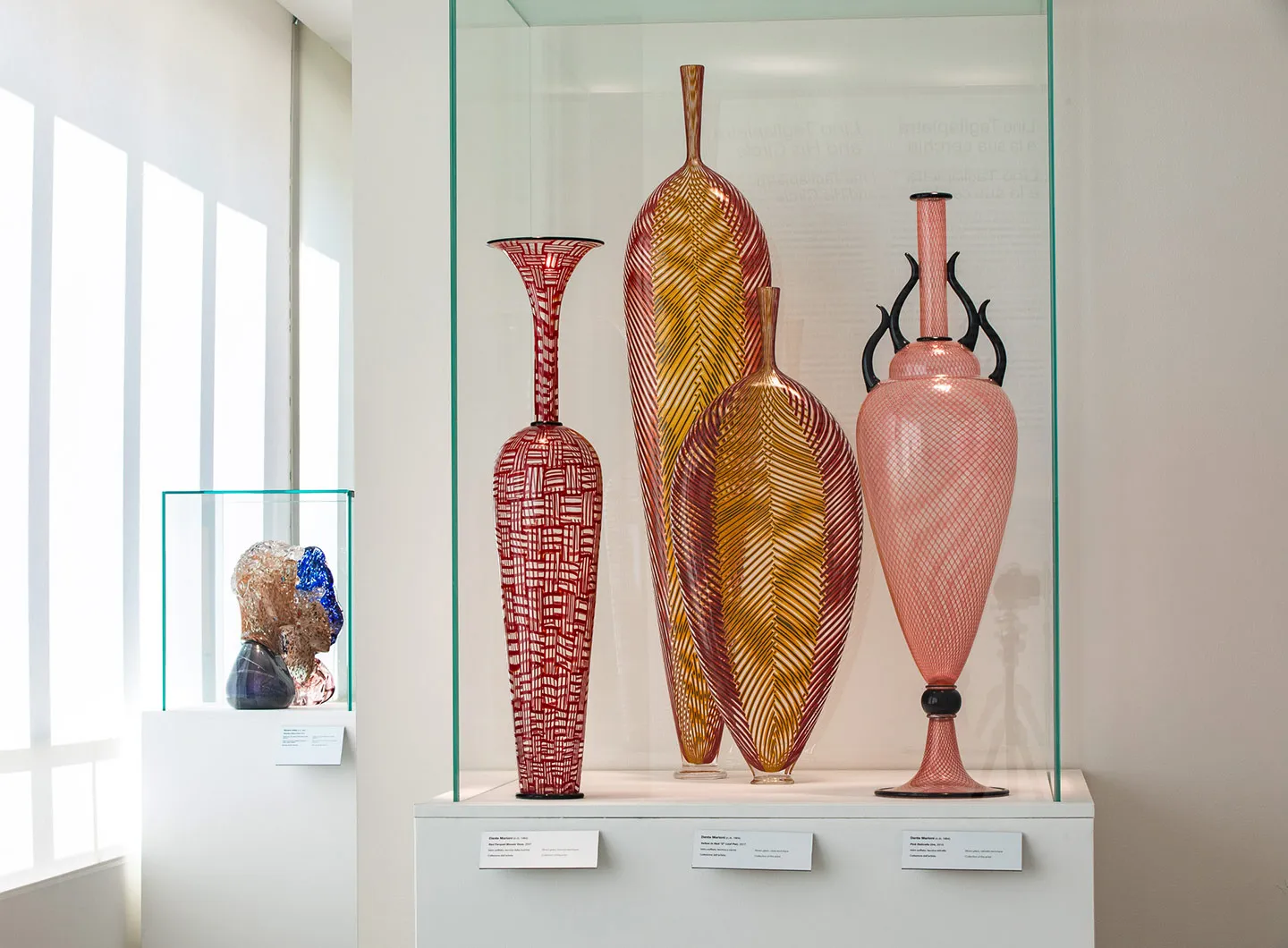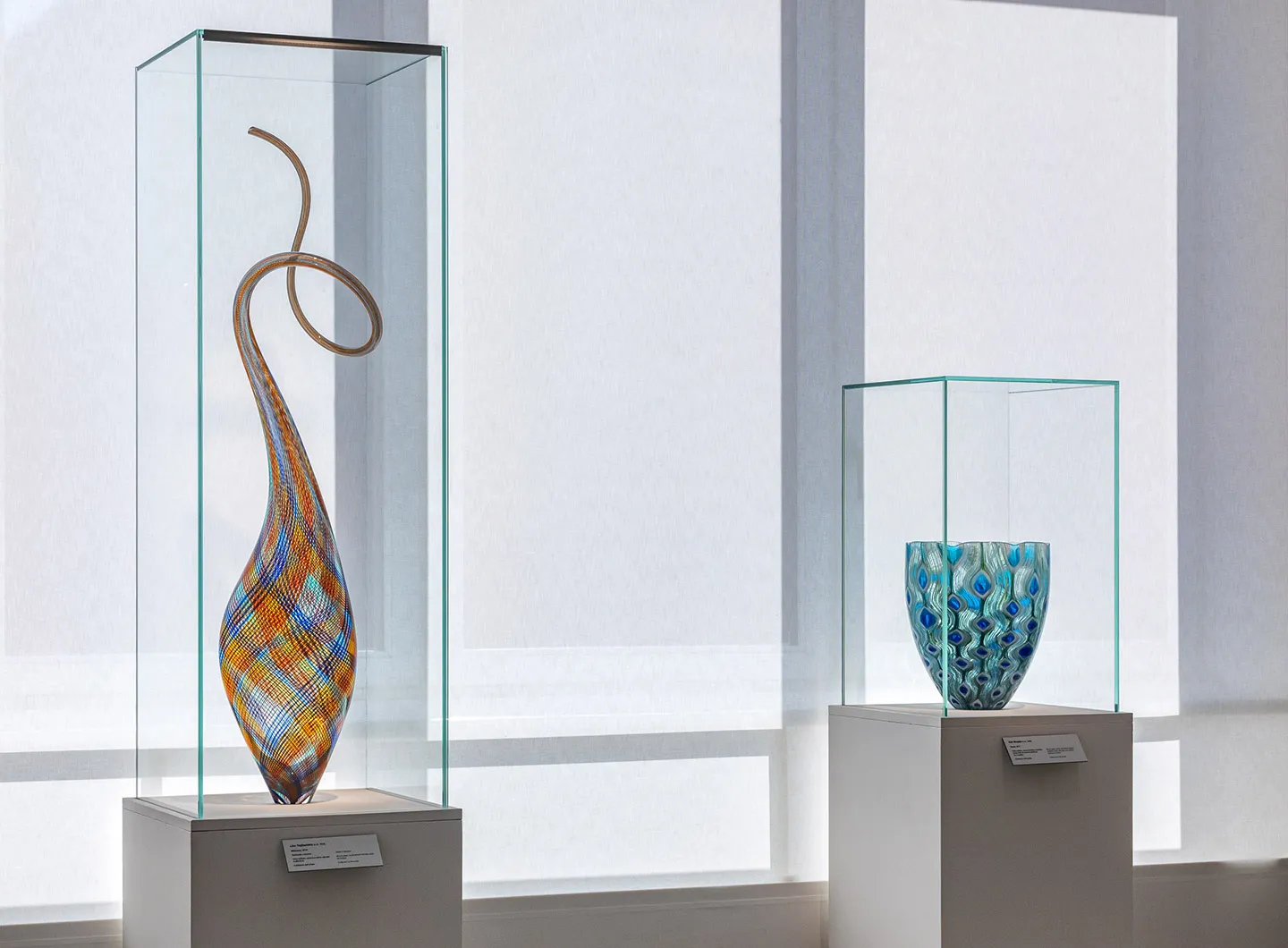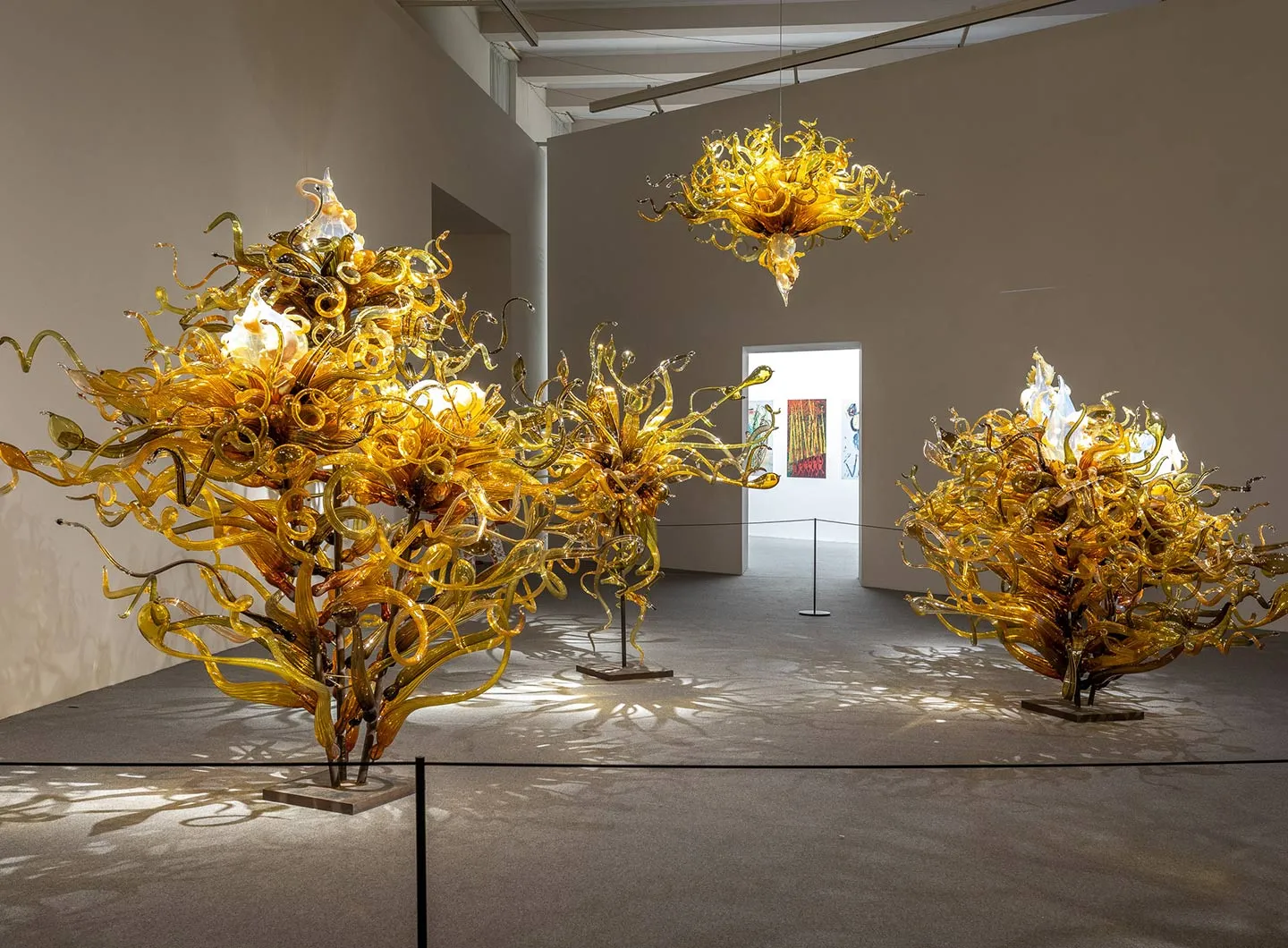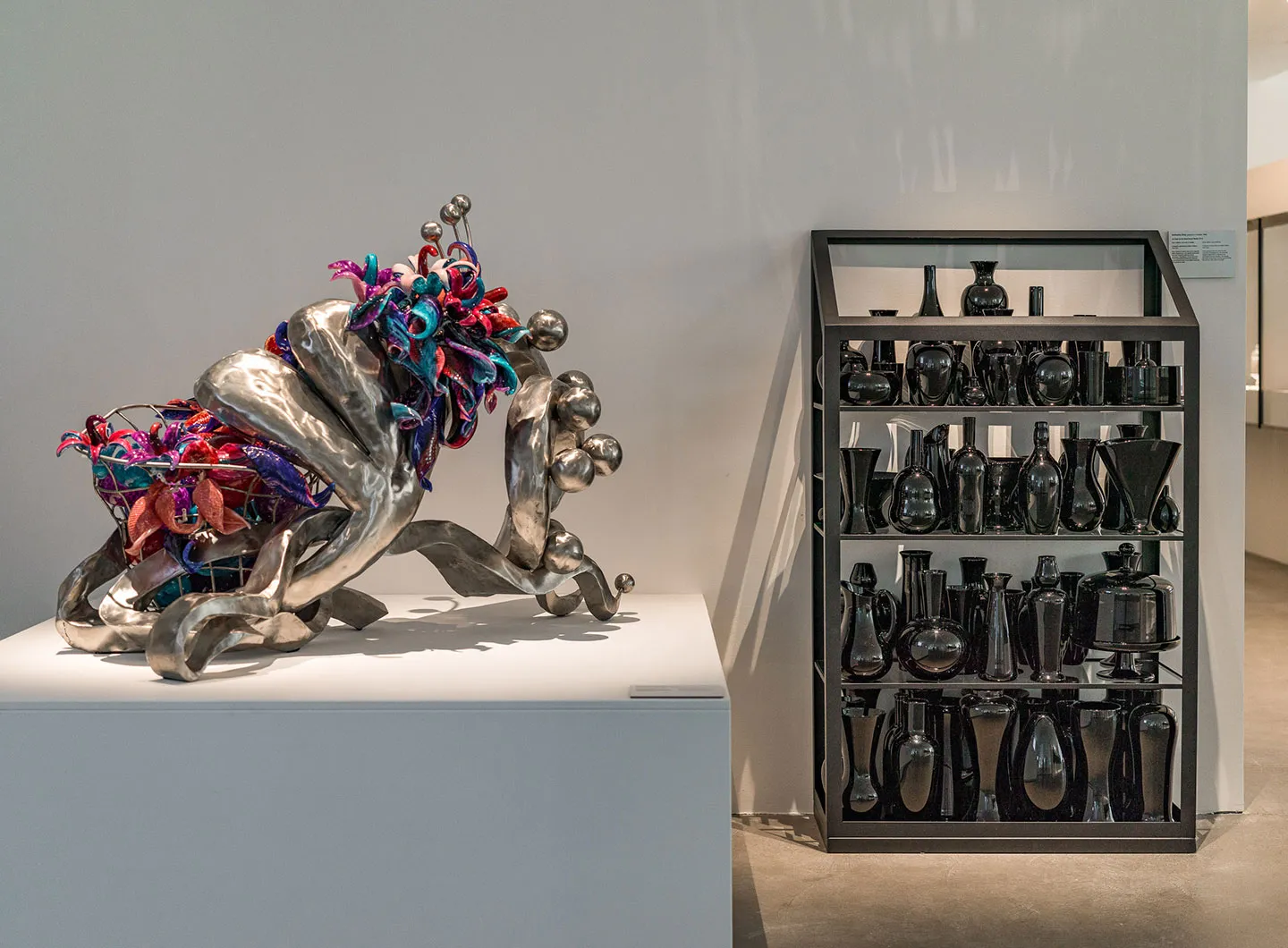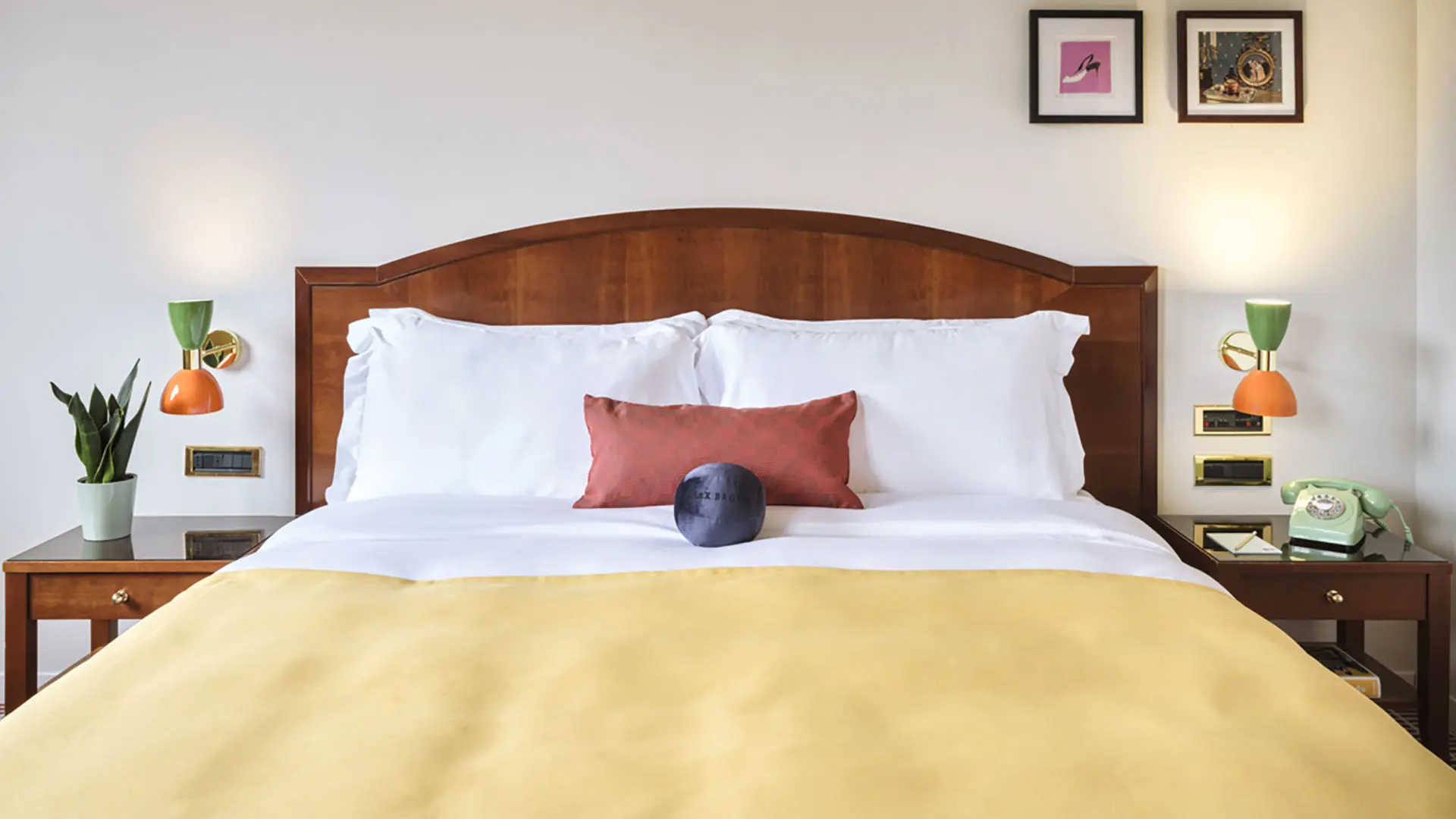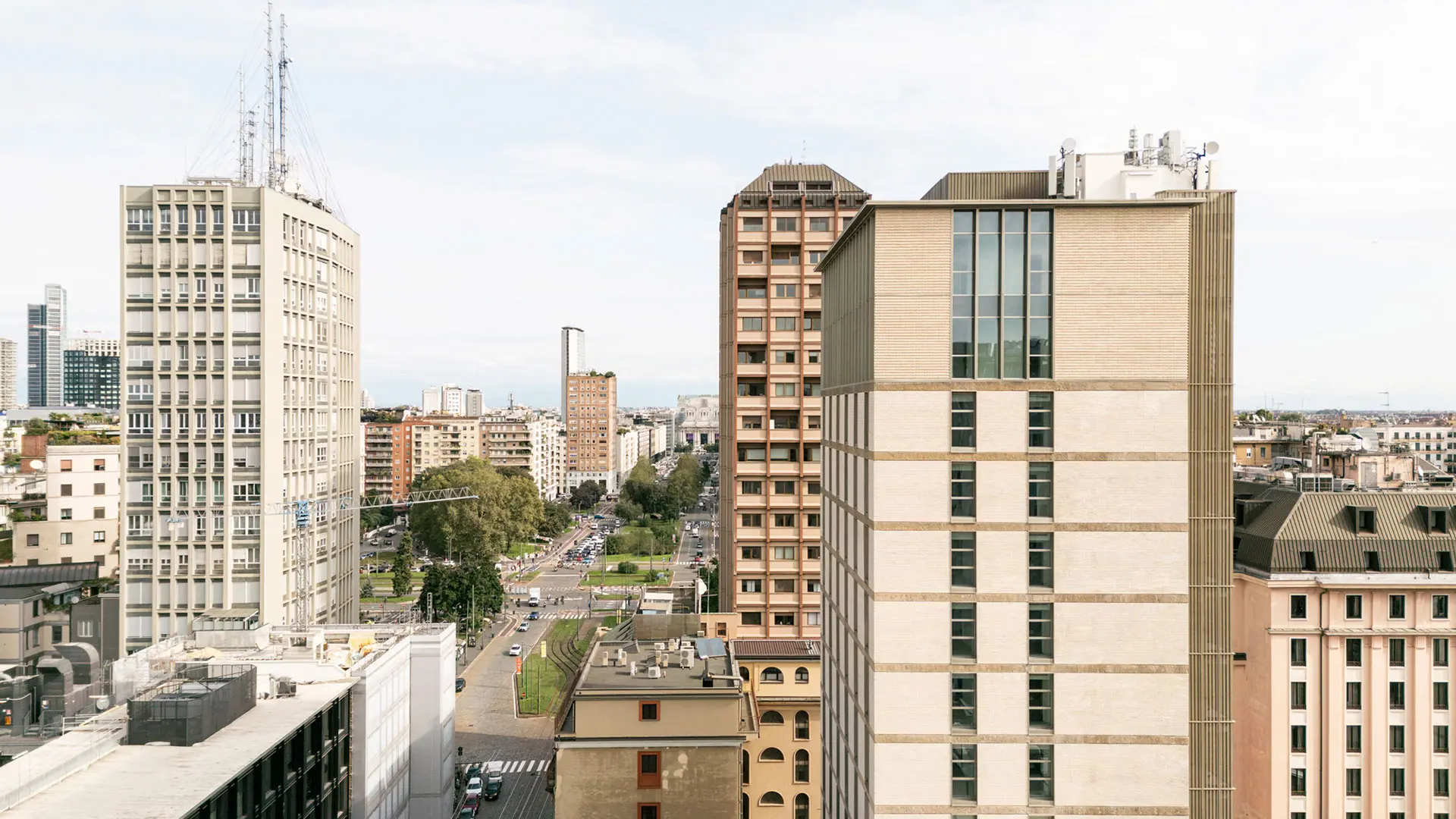In partnership with MiCodmc, a selection of establishments ripe for discovery during the 63rd edition of the Salone del Mobile.Milano, from 8th to 13th April
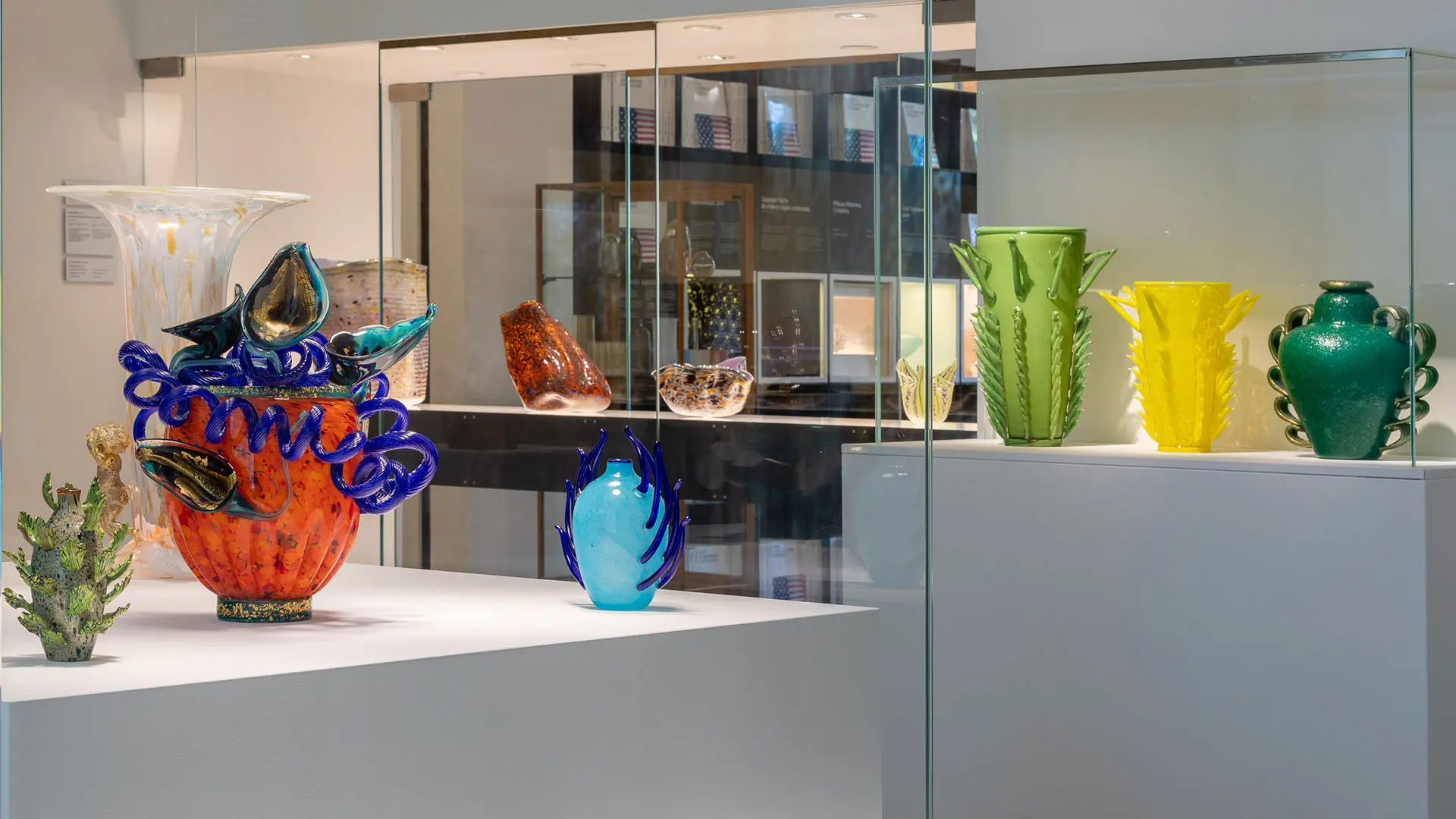
Installation view - Photo Enrico Fiorese
One of the most keenly-awaited exhibitions in Venice, it traces the history of American Studio glass. From the '60s to the present day, a story of reciprocal influences.
This is the eighteenth edition of the cultural project Le Stanza del Vetro, the exhibition in Venice dedicated to the making and design of 20th century and contemporary glass from Murano and around the world, geared to illustrating the endless potential of this particular material and bringing it back into the centre of debate on the global arts scene.
The exhibition entitled Venice and American Studio Glass – curated by Tina Oldknow and William Warmus, former curators of modern and contemporary glass at The Corning Museum of Glass, one of the world’s leading museums of glass – explores for the first time the influence of Venetian glass on this artistic movement on the other side of the Atlantic, from the Seventies to the present day.
The Studio Glass Movement originated in the United States in the early Seventies, immediately catching on in Europe, Australia, and then Asia, characterised by the new role of craftsmen as designers, planners and makers of unique objects and by the sharing of techniques and ideas between artists that had hitherto been closely guarded secrets. In other words, molten glass flowed from the factories into artists’ studios, as had been the case not long before with ceramics, becoming once again a material harnessed by contemporary art.
One of the pioneers of the movement was Harvey Littleton, a ceramist at the University of Wisconsin and promoter, along with Dominick Labino, of the two seminal glass workshops that heralded the official launch of Studio Glass, at the Museum of Art in Toledo. The city of Ohio is intrinsically linked to the glass industry, so much so that it’s known as the Glass City. It was here, in 1901, that the magnate Edward Libbey, owner of the Libbey Glass Company, founded the Toledo Museum of Art, one of the world’s most important collections of art glass and a place for experiments and innovation in glassblowing techniques. It was in a garage inside the complex itself that the two artists, Littleton and Labino founded Studio Glass in the early Sixties.
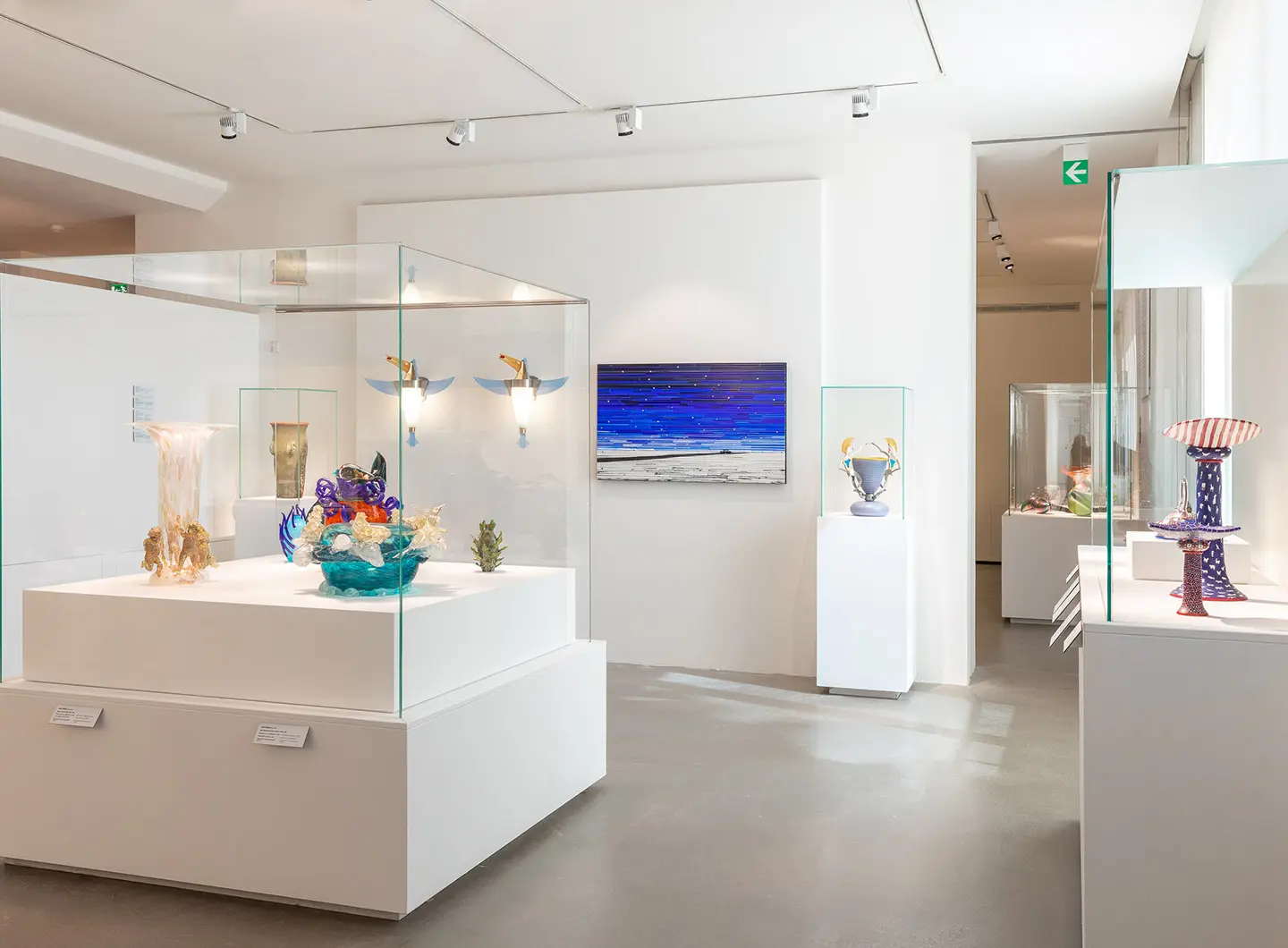
Installation view - Photo Enrico Fiorese
Littleton’s idea was “that there ought to be continuing, ongoing, aesthetic experimentation in material apart from production […] I am burning to prove that the ‘mystery’ of glassworking is as teachable to artists as we have proven the mysteries of pottery were.” In the catalogue for the exhibition, the curator Tina Oldknow says that Littleton hoped that the American Artists would develop glass, a material of which industry claimed the monopoly, as a vehicle for modern art. With the help of their Venetian colleagues the American artists did just that, embracing the Murano glassworking techniques as a means of experimenting, exploring, controlling and understanding this demanding, and at times enigmatic, material.
The story began in the early Fifties, with the first American visits to the Venini workshop in Venice, the only company on Murano that regularly invited artists from other parts of Italy and abroad. In 1963 Littleton managed to establish the first university glass programme in the United States, at the University of Wisconsin. One of his former students, Dale Chihuly, who became Director of the Glass Department at the Rhode Island School of Design and a renowned international artist, remembers that Littleton had a knack of drawing in talented students and passing artists … “He taught us to think big, not small.” The following year, in 1964, American glass was presented to the public for the first time at New York’s Columbia University. By the turn of the Sixties, a. number of artists had begun to take glassblowing into experimental and innovative directions, despite their lack of sufficient technical knowledge for the most part. At that time, glassblowing had already become industrialised for some time in the United States and many skills were lost, so that many Studio Glass artists looked to Europe and to Murano and its centuries-old tradition in particular. This led to a very real “love affair” that later saw the diffusion of Venetian glassworking processes in America and all over the world, during the Nineties.
The story of American Studio Glass is a particularly interesting one, not least from a socio-anthropological point of view. It responds to the question of what happens when two – in many ways very opposing cultures – such as the Venetian and the American – come together and cross-pollinate. It’s a real American discovery, both in the sense of America discovering Murano and in the sense of Murano discovering America. On one hand, Murano made products appreciated for their function, whilst America created unique pieces, sought-after for their beauty. Over the centuries, Murano has become an established institution that is deliberately closed in on itself, with a local dimension. Right from the outset on the other hand, American Studio Glass, aspired to institutionalisation, seeking a distinct identity through a cosmopolitan dimension driven by experimentation and innovation.
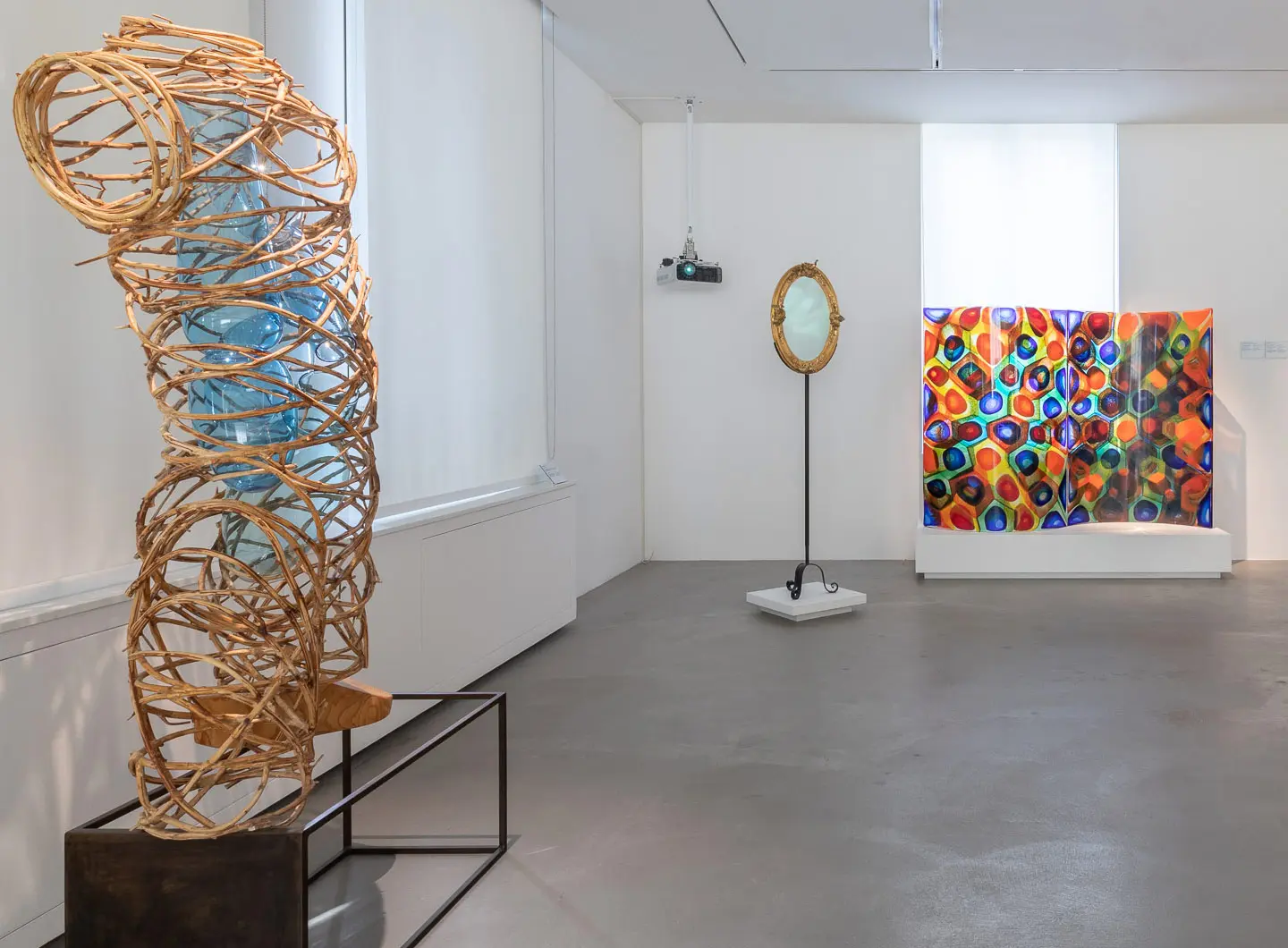
Installation view - Photo Enrico Fiorese
So how did Murano enter into a relationship with the Americans? A crucial role was played by Paolo Venini and, later, by his son-in-law Ludovico Diaz de Santillana. The Venini family, which was always open to others and to the world, caused a great local scandal by inviting American artists to visit the company and work for them at the end of the Second World War. “Pollination and transformation,” is how the curator Tina Oldknow describes the impact Venice had on American Studio Glass. In other words, the Venetian impact on American studio glass consisted of demystifying molten glass, traditionally a hermetic material, its production cloaked in secrecy. “Harnessing the wildness of glass,” as the leading glass artist Nancy Callan, whose works are on show in the exhibition, put it.
The 155 pieces in the exhibition – vessels, sculptures and installations created by 60 American and Venetian artists – narrate this story of pollination and influences. As well as demonstrating the enduring and versatile legacy of Venetian glass production in America, the exhibition explores the way in which these artists - Lino Tagliapietra and Luca Signoretto in particular – revived the vibrancy of a historic craft language and further developed it to create stunning works of art.
It is a story that bound up with the process itself, with molten glass, melted directly in the furnace, blown or sculpted by hand. The focus of furnace working is cooling the molten glass, which is manipulated by blowing and sculpture techniques performed by the master glassmaker and, in most cases, by a group of assistants. The artist pioneers include Dale Chihuly and Benjamin Moore who, after visiting Venice, invited the master glassblowers to come and teach in their country. Other artists, such as Richard Moore, developed innovative uses for murrine, the typical Venetian mosaic technique. Dante Marioni, Nancy Callan and James Mongrain have created vases, installations and objects, while William Morris and Martin Blank have devoted themselves to sculpture, like Flora Mace and Joey Kirkpatrick, but on a monumental scale. Then there are those members of the younger generations who harness glass as a medium for storytelling – Josiah McElheny, Katherine Gray and Norwood Viviano – which all goes to show that glass design knows no limits, striving constantly for new directions and visions.
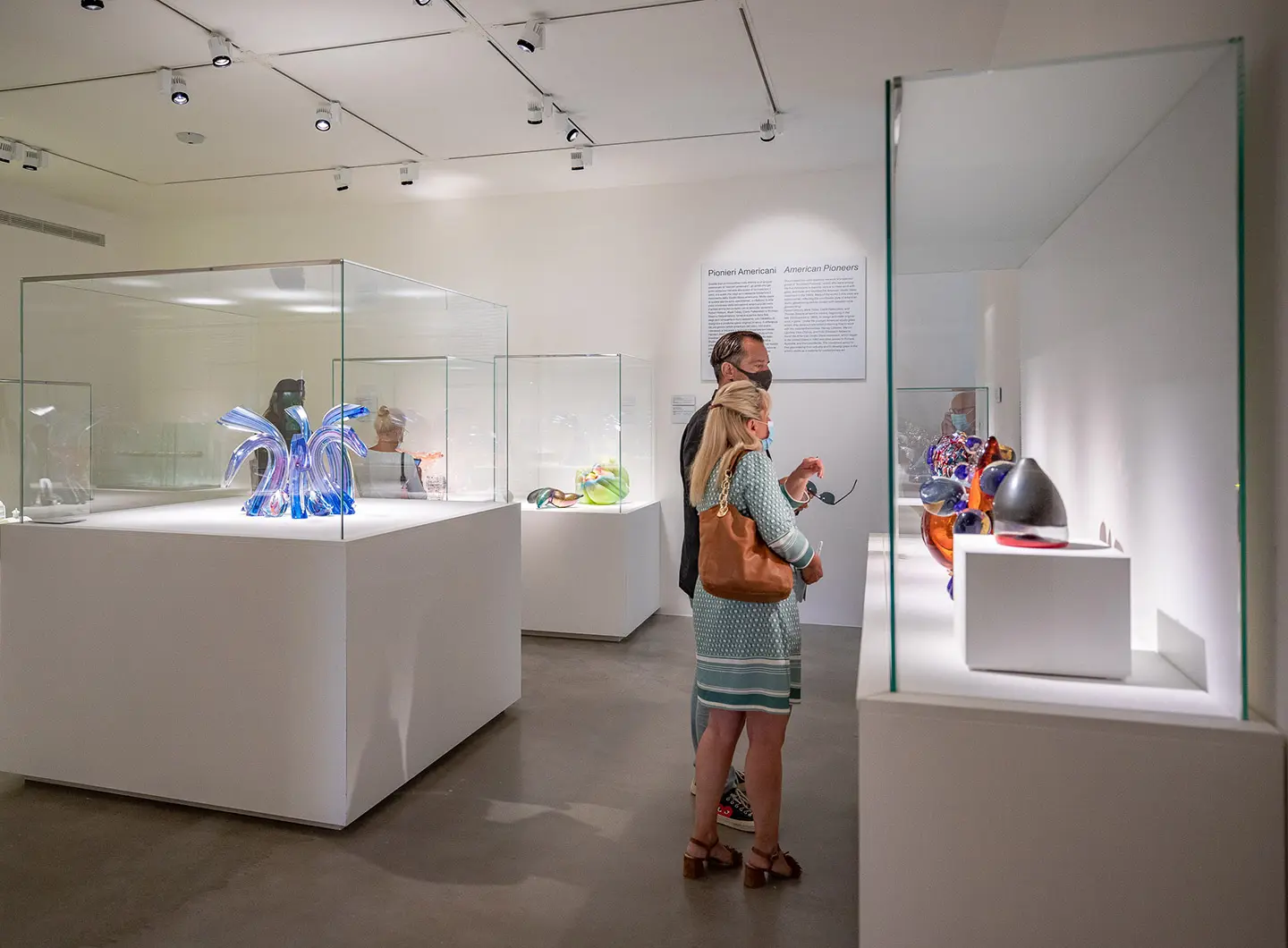
Installation view - Photo Enrico Fiorese
The exhibition is laid out in a series of 9 rooms. It starts with the American pioneers, both the artists who were the first to visit Venice in the Fifties to work with glass, and those who later founded the Studio Glass Movement, such as Marvin Lipofsky, Fritz Dreisbach and the previously-mentioned Littleton and Chihuly. The next two rooms are given over to the first and second generation American innovators – those who not only disseminated the glass blowing techniques but found fresh ways of giving shape to their poetic visions, ensuring that Studio Glass became established through major travelling exhibitions to museums, like the 1979 show New Glass: A Worldwide Survey at the Corning Museum of Glass. These same rooms also contain pieces by the iconic designers Carlo Scarpa, Napoleone Martinuzzi and Fulvio Bianconi, who inspired many American artists to explore the aesthetics and methods of making. The fourth room is dedicated to Lino Tagliapietra and his circle. As of 1979, and for many years thereafter, this talented and versatile master taught at the famous Pilchuck Glass School in Seattle, founded in 1971 by Dale Chihuly, which later became the most actively involved centre for the exchange of knowledge between European and American artists. As well as works by Chihuly, there are others by his mentor Archimede Seguso and by the most talented artists inspired by his oeuvre, such as Dante Marioni, Nancy Callan, John Kiley, Kait Rhoads and Stephen Rolfe Powell. The fifth room is dedicated to the master of massiccio sculpting, Pino Signoretto, who was also invited to teach at the Pilchuck Glass School, ushering in a new era for American glass sculpting. The next room is an introduction to the 21st Century, with many of the young American artists focusing on conceptual development, tackling themes ranging from the observation of the natural world to narration, identity and material, as well as climate change and scientific progress. Many of the artists wondered whether vessels had to contain something or not, like other forms of sculpture, becoming artistic subjects in their own right - hence the title of the seventh room, Engaging the Vessel. The vessel becomes a medium for exploring forms, colours or gripping narrations, or perhaps a metaphor for the human body through the introduction of formal elements, such as lips, mouths, shoulders and feet. The eighth room is devoted to video projections, after which the exhibition draws to a close in the majestic Sala Carnelutti, the fulcrum of the exhibition, which contains Chihuly’s monumental installation, Laguna Murano Chandelier, which he made with the masters Tagliapietra and Signoretto in Murano in 1996; it bears tangible witness to the collaboration and cross-pollination between American and Venetian artists. Exhibited for the first time outside the United States, the chandelier is made up of five enormous components incorporating sculptural elements, evocative of the Venetian lagoon. This room also contains architectural projects harnessing the value of natural light, transmitted by glass. They are the work of James Carpenter, with whom Chihuly often collaborated over the course of his multifaceted career, including large-scale installations, architecture and glass for architectural use.
This “story” was not one of exportation or emulation, nor one of fashion or lucre, but born of the specific desire to understand and shape a difficult material such as glass, to which access has historically been limited, since melting and forming glass requires a high-heat furnace and specific technical skills. No other material, moreover, has such an ability to change its aspect through colour, consistency and mass, to entrap and reflect light, to change from translucence to opaqueness, from liquid to solid. As William Warmus, co-curator of the exhibition, says: “The Venetian aesthetic is extraordinary, not based upon the mere refinement of technique, and adaptable to, as Susan Sontag wrote, ‘contemporary needs and practice.’ This is demonstrated most notably by the ways in which American studio glass artists, beginning in the 1960s, blended this refined glassy aesthetic with the raw, edgy aesthetic dominant in the United States.”
Fondazione Giorgio Cini
Isola di San Giorgio Maggiore, Venice
Runs until 10th January 2021
www.lestanzedelvetro.org - virtual tour of the exhibition
www.cini.it


 Salone Selection
Salone Selection
